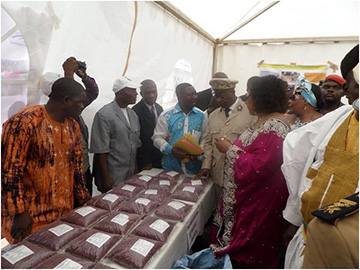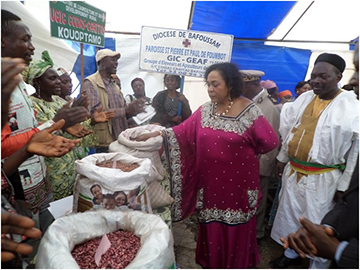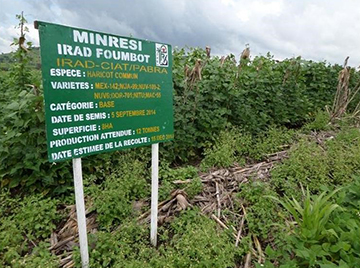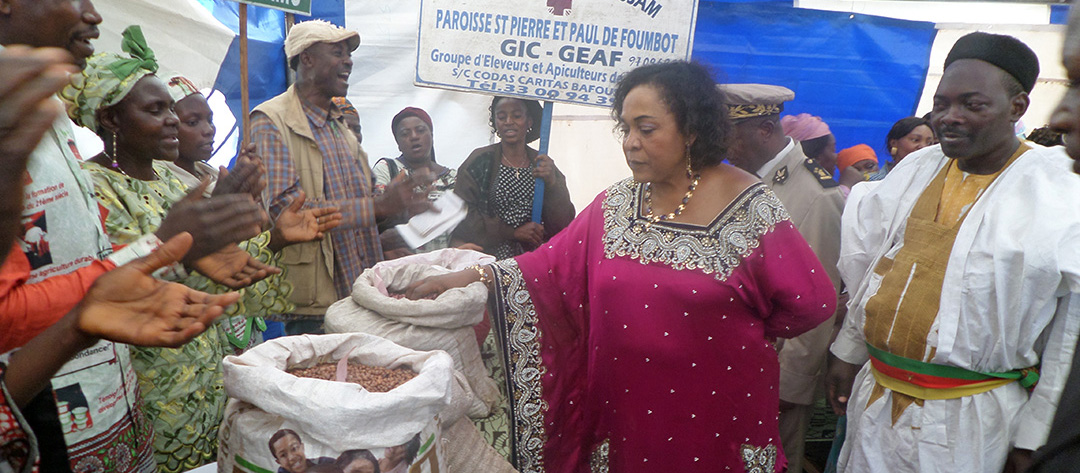Last month (March 2015), Cameroon celebrated the release of five new bean varieties aimed at reducing malnutrition and raising farmer incomes.
A ceremony, opened by the Minister of Scientific Research and Innovation, Dr. Madeleine Tchuinté, to honour the occasion, was held at the Agricultural Research Institute for Development (IRAD) research station of Foumbot on 10th March 2015.


The research station is located in one of Cameroon’s most productive bean growing areas and is where most of the research to identify the varieties most suitable to Cameroon’s climate is carried out.
Guests included farmer representatives from all over the Western Region who came to find out more about the new varieties.
The new varieties were developed in partnership with the International Center for Tropical Agriculture (CIAT) under the Pan-Africa Bean Research Alliance (PABRA). Cameroon has been a member of the Alliance for 10 years and is one of the most active members in West and Central Africa region, having already released 7 new varieties in February 2012.
The PABRA network enables its members to build in-country capacity and share germplasm amongst each other so that a country like Cameroon, which opted to achieve fast impact, is able to access, introduce and select bean varieties from other member countries for adaptation to its own markets and agro-ecological zones.
The five new varieties released are a combination of both bush and climbing beans and were selected for different traits including high yield, high nutrient content, resistance to various pests and diseases and tolerance to low soil fertility.
Now that the new varieties have been released, IRAD will work with partners to produce sufficient basic and certified seeds and ensure it is available for farmers to buy across the bean growing areas.
Varieties released

- NUA-99: tinted red and white, this nutrient-dense variety is suited to areas with high, low altitudes. With a plant cycle of 70 to 75 days to yield 1.5 to 2.5 tonnes per hectare. It is a bush bean variety originating from CIAT / PABRA.
- B.G.G: also a bush variety, this grey bean originates from the IRAD Station Foumbot. Its production cycle is 70 days with a yield of 1.2 to 2 tons per hectare in the optimum production conditions;
- DOR-701: with a longer production cycle (80-90 days), this climber originating from CIAT / PABRA is also one of the most productive with a yield of 2 to 3 tons per hectare. It is recognizable by its bright red colour;
- PNN black, this variety also has a long cycle of nearly 90 days. It is very productive – yielding 1.2 to 2.5 tons per hectare.
- NUV-109-2: originating from CIAT / PABRA, this nutrient-dense variety has a longer production cycle (90 to 110 days) and is suitable for high altitudes and long rainfall.
For more information about the new varieties visit IRAD.
All photos: Martin Ngueguim & Chimi Clement, IRAD.

